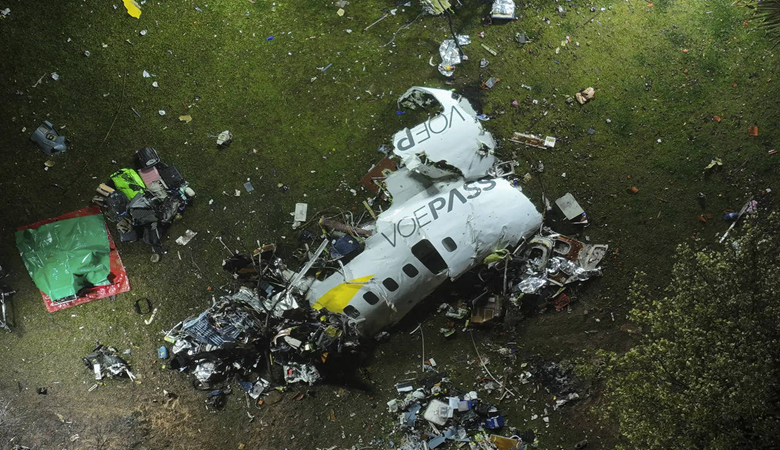Brazil Plane Crash Kills 62: What We Know About the Tragic ATR-72 Accident Near Sao Paulo

News Mania Desk/Agnibeena Ghosh/12th August 2024
On Friday, an ATR-72 turboprop operated by the regional airline Voepass crashed in a residential area near Sao Paulo, Brazil, leading to the tragic loss of all 62 passengers aboard. The flight, which was traveling from Cascavel to Sao Paulo, went down around 1:30 p.m. local time in Vinhedo, located approximately 80 kilometers (50 miles) northwest of the city.
In the aftermath of the disaster, Brazil’s aviation accident investigation center, Cenipa, has recovered the aircraft’s black box. This device, which contains critical voice recordings and flight data, is expected to be crucial in understanding the sequence of events that led to the crash. Cenipa’s head indicated that a preliminary report would be available within 30 days. Reports suggest that the plane lost radar contact at 1:22 p.m. and failed to respond to attempts to communicate, with no emergency signals being sent by the crew.
Witness videos have revealed that the aircraft was flying through clear skies before it began its spiraling descent. This initial observation has prompted experts to explore various potential causes of the accident.
One key area under investigation is the aircraft’s weather conditions at the time of the crash. US aviation safety expert Anthony Brickhouse noted that conditions such as ice buildup could have significantly affected the aircraft’s performance. Preliminary analyses have suggested that ice might have played a role, particularly since Voepass had anticipated ice at the altitude where the plane was flying, though it was expected to be manageable. Brazilian aviation engineer Celso Faria de Souza supports this theory, citing video evidence of the conditions leading up to the crash. Historical data also reveals that ATR-72 planes have faced similar issues with icing in the past, including fatal incidents in Indiana in 1994 and Norway in 2016.
Another theory being considered is engine failure. MIT professor John Hansman has reviewed footage of the crash and suggested that a malfunction on one side of the engine could have contributed to the plane’s uncontrolled descent if it was not adequately managed by the crew. This scenario could potentially explain the plane’s erratic movements before the crash.
Furthermore, Robert A. Clifford, a lawyer with experience in aviation accident cases, has highlighted that crashes often result from a combination of factors. He pointed out that issues such as icing, engine failure, and human error might all have contributed to the disaster. This multifactorial approach is essential in understanding the full scope of what might have caused the plane to go down.
As the investigation unfolds, authorities and experts will work diligently to piece together the exact circumstances leading to this tragic event. The recovery of the black box and further analyses will be critical in uncovering the factors that contributed to the crash and preventing future incidents. The entire aviation community is keenly awaiting the findings, which will hopefully provide clarity on this devastating accident.






